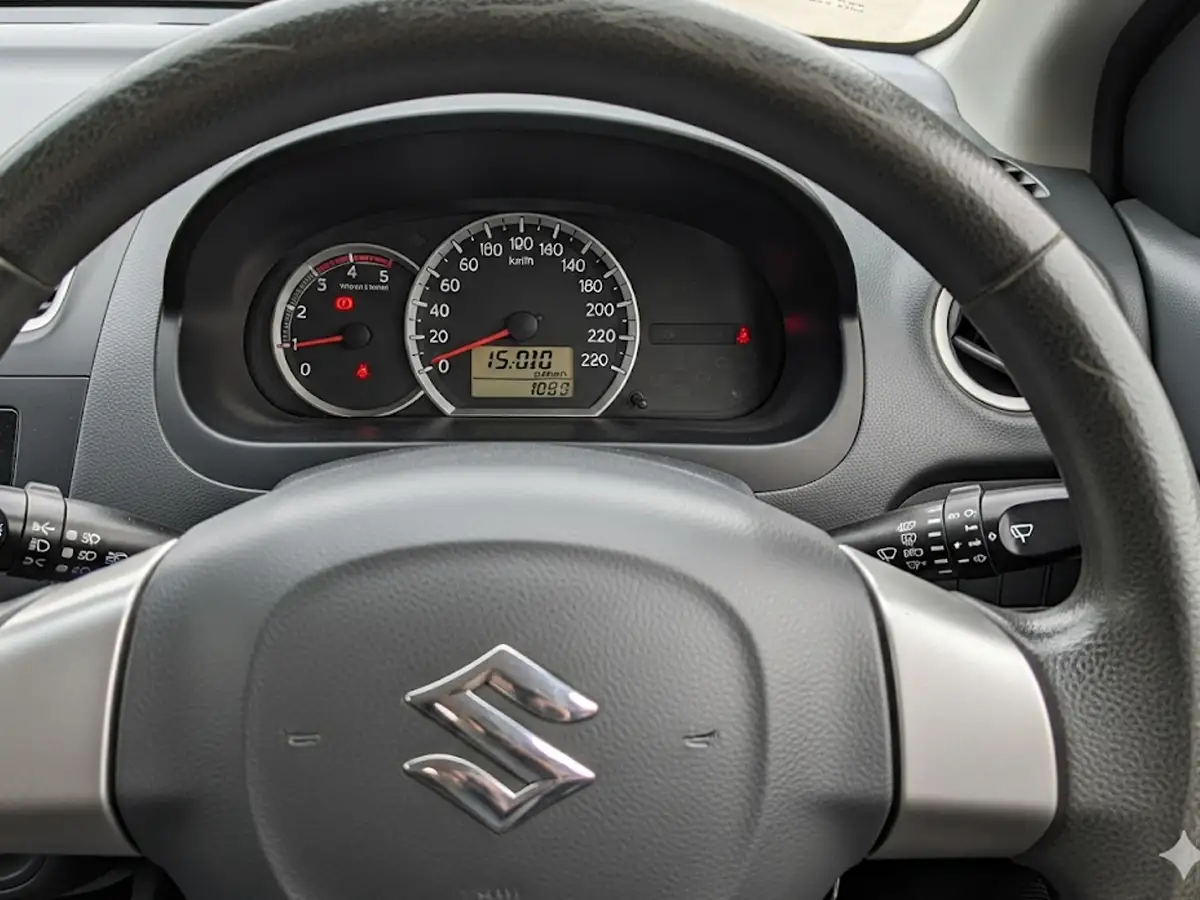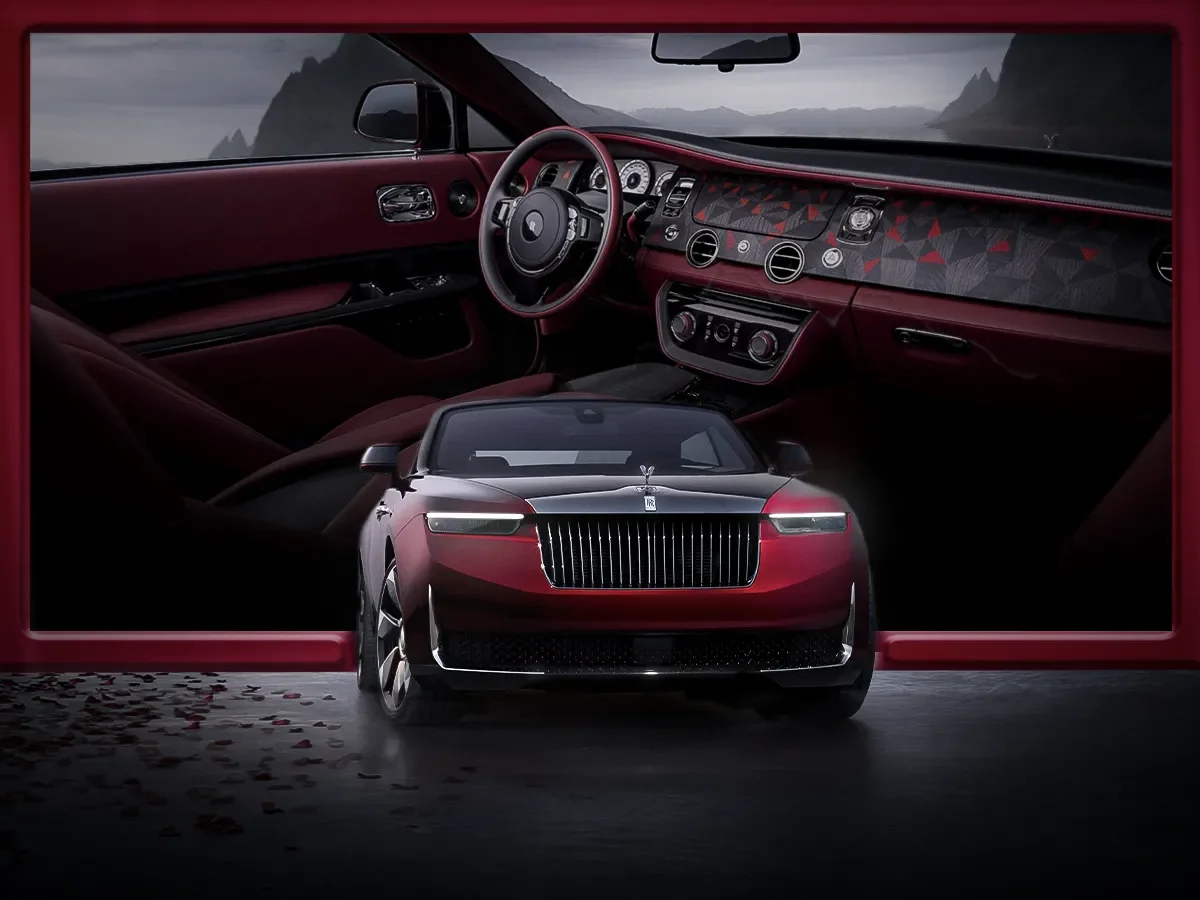

How to Spot Odometer Tampering in a Used Maruti Swift or Alto?
- 1Used odometer tampering is amongst most common frauds in second-hand car market
- 2Visual checks, service records, and OBD2 scans are the most effective ways to check
- 3A proper used Swift Alto fraud check can save buyers from costly mistakes
- Why Odometer Tampering Happens So Often?
- Start With the Paper Trail
- Let the Car’s Condition Speak
- Dashboard Tells No Lies (If You Look Closely)
- Use Tech Against Tech: The OBD2 Scan
- The Test Drive Detective Work
- Trust the Math: Average Mileage Per Year
- Get a Vehicle History Report
- Quick Checklist to Expose Odometer Fraud
- Summary
Buying a pre-owned car can feel like a win when you come across a hatchback showing low mileage on the odometer. But in India’s used car market, numbers are not always what they seem. One of the most common tricks that buyers encounter is used odometer tampering, where the displayed reading is rolled back to make a car look newer and less driven than it actually is.
This practice can be costly for anyone looking at popular hatchbacks, such as a used Maruti Swift or used Maruti Alto, as hidden kilometres often mean more wear, higher maintenance, and unexpected expenses after purchase. The good news is that there are clear ways to identify when something isn’t right. In this guide, we break down the signs of used odometer tampering and explain how to carry out a proper used Swift Alto fraud check before you make your decision.
Why Odometer Tampering Happens So Often?

Mileage plays a direct role in determining the value of a car. A hatchback showing 30,000 kilometres on the odometer will naturally command a higher resale price compared to one that has crossed 80,000 kilometres. This is precisely the reason why used odometer tampering has become a widespread activity among dishonest sellers.
Just how prevalent odometer fraud has become was pointed out in July 2024 in a case in Chandigarh. One of the buyers found out that his used Tata Tiago had covered over 1,08,000 kilometres despite being sold at 48,000 kilometres. Subsequently, the consumer commission directed compensation for the misrepresentation and the seller was fined ₹25,000.
Digital odometers have replaced mechanical odometers in most modern cars, such as the Swift and Alto. Tampering nowadays is done using electronic tools that can change the reading in a few minutes instead of physically adjusting gears. The benefit to the buyers is that, however sophisticated the manipulation, a car will always bear indications of its real use. When you perform a used Swift Alto fraud check, being aware of these signs can help you distinguish between a genuine vehicle and one that is hiding additional kilometres.
Start With the Paper Trail
The first step is to see if the car’s history aligns with the numbers being shown.
Service Records
Mileage is recorded in every authorised service centre when conducting routine maintenance. When a record indicates 50,000 kilometres last year and the odometer now indicates 25,000 kilometres, then it is a clear indication of used odometer tampering.
Insurance and RC Papers
Mileage is sometimes captured when the insurance is being renewed or when ownership changes. Any slight discrepancy between such records and the odometer reading must be considered a warning.
Tip: Contact the service centre with the car’s chassis number. Most workshops confirm past service details, and this simple call can often reveal whether the mileage being claimed is genuine.
Let the Car’s Condition Speak
It is easier to change numbers, whereas the condition of a car is more difficult to hide. A five-year-old hatchback with only 15,000 kilometres should be nearly new. If the steering, upholstery, or pedals are heavily used, it is a red flag.
- Steering Wheel and Gear Knob: Smooth, shiny patches on leather or plastic usually point to extended use.
- Pedals: Rubber pads typically wear out after 40,000–50,000 kilometres. If they appear worn down while the odometer shows only 10,000, you may be looking at used odometer tampering.
- Seats and Roof Liner: Sagging cushions or stained roof lining suggest higher usage than the mileage reflects.
During a used Swift Alto fraud check, these physical signs often reveal more than the display on the dashboard.
Dashboard Tells No Lies (If You Look Closely)
The majority of tampering is done in the area of the instrument cluster and with a keen eye, you can easily detect the evidence.
- Look for scratches near screws or loose fittings around the cluster.
- Check whether the plastic edges seem pried or not fitted.
- Notice if warning lights are flickering when the ignition is switched on.
All these are signs that the cluster has been messed with and in most instances, they point to used odometer tampering.
Use Tech Against Tech: The OBD2 Scan
An OBD2 scan is one of the surest ways to check mileage. This scan can also show the stored mileage that is usually not changed, even after the display has been modified by connecting to the ECU of the car.
During pre-delivery inspection, insist on an OBD2 check. When the ECU records indicate 80,000 kilometres and the dashboard indicates 30,000, it is definite that there has been tampering. This is the best protection in a used Swift or Alto fraud check.
The Test Drive Detective Work
A test drive can reveal what the numbers cannot. Pay attention to how the car feels on the road.
- Does the odometer reading increase smoothly as the distance adds up?
- Do the engine and suspension feel worn out compared to what you would expect from a car with 20,000 kilometres?
- Is there excess play in the clutch or steering that suggests long-term use?
Even without technical knowledge, buyers can sense when a car feels older than it claims to be. If the driving experience does not match the odometer reading, there is a strong chance of used odometer tampering.
Trust the Math: Average Mileage Per Year
One of the simplest ways to verify a car’s usage is through basic maths. In India, most hatchbacks average between 10,000 and 15,000 kilometres per year. If you come across a six-year-old Alto showing only 18,000 kilometres, it should raise questions. Unless the vehicle has genuinely remained unused for long periods, such low mileage is highly unlikely.
This quick calculation is one of the strongest checks when browsing listings for a used Maruti Swift or used Maruti Alto.
Get a Vehicle History Report
Digital tools can also give you an edge. Many platforms now provide vehicle history reports that combine details from service centres, insurance renewals, and registration databases. If earlier entries record higher mileage than what is currently displayed, it is clear evidence of used odometer tampering.
Quick Checklist to Expose Odometer Fraud
When in doubt, use this checklist to make sure you are not being misled:
- Compare odometer readings with service and insurance records.
- Check for wear and tear against the mileage being claimed.
- Inspect the instrument cluster for signs of tampering.
- Run an OBD2 scan during pre-delivery inspection.
- Judge the overall drive quality and tightness during a test drive.
- Calculate average yearly mileage to see if the numbers are realistic.
- Pull a digital history report for final confirmation.
Going through these steps can help you uncover nearly every case of used odometer tampering and ensure that your purchase decision is based on facts, not manipulated figures.
Summary
Buying a hatchback in India, like a used Maruti Swift or a pre-owned Maruti Alto, is often a smart choice for drivers who want reliability and value without stretching their budget. But mileage tampering can quickly turn that deal into an expensive mistake if you are not careful.
When you are carrying out a used Swift Alto fraud check, remember that a low odometer reading alone does not confirm the car’s condition. Always back it up by checking service records, inspecting overall wear, running an OBD2 scan, and paying attention during the test drive.
In the end, the car should reflect the truth of its journey, not just the numbers on the display. Spotting used odometer tampering is less about technical expertise and more about knowing where to look. Stay alert, verify every detail, and make sure the hatchback you choose is genuinely worth the price you are paying.
Frequently Asked Questions
Expand all





















